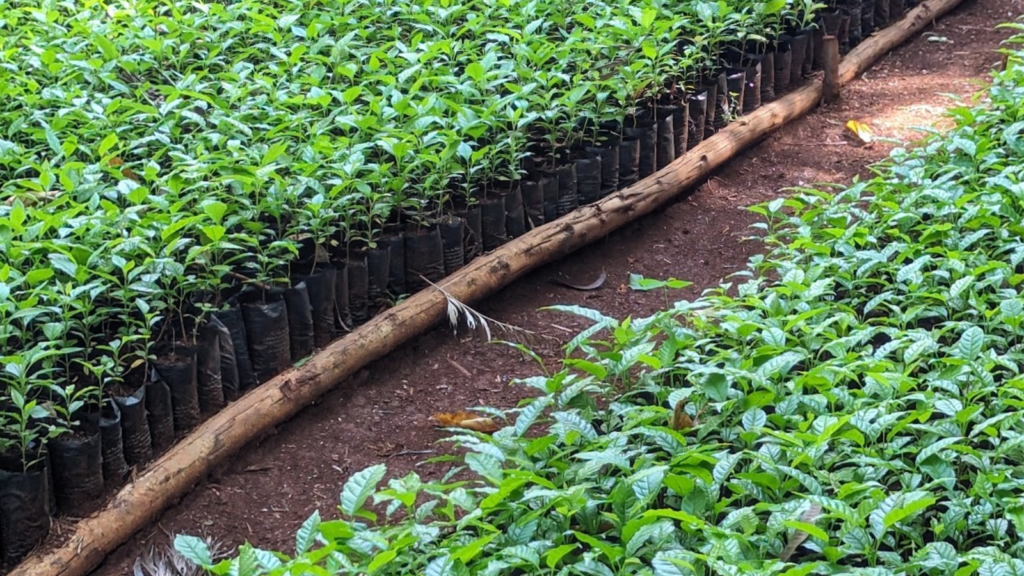Our initiative, Carbon Farming for Agricultural and Environmental Sustainability and Profitability (CAFAESUP) addresses climate change by capturing greenhouse gas emissions and returning them to the soil through regenerative agriculture. We collaborate with hundreds of thousands of farmers in Kenya and Tanzania through our project.
In March, we welcomed the GRP team for a visit to Ikunu, in Githunguri Sub-county, Kiambu County, located on the outskirts of Nairobi. Over 70% of the residents in this region rely on agriculture as a source of livelihood. However, they often face waves of climate shocks that derail production activities. With dismal yields over the years due to rainfed agriculture, a type of farming that relies mainly on rainfall for water, and the use of high synthetic fertilisers, farmers are now shifting towards regenerative agriculture as a sustainable mitigation strategy.
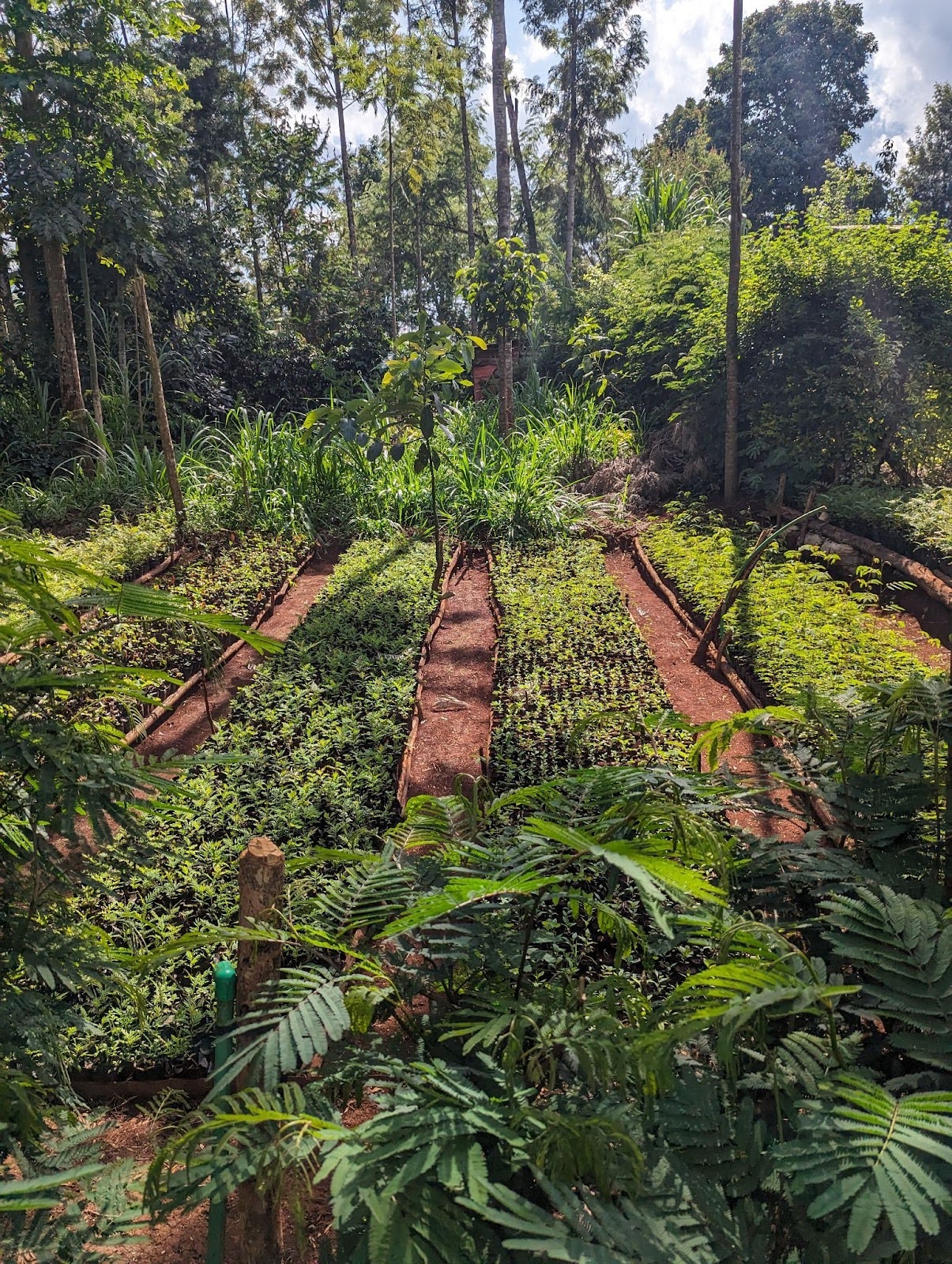
Corina Angheloiu
The need for regenerative farming, a farming approach that nurtures and restores soil health, is more evident than ever. At CAFAESUP, we offer a series of training sessions on regenerative agriculture as a means to reduce greenhouse gas emissions from the atmosphere. This method has proven to be a game-changer for farm performance, diversification of value chains, and creating an additional source of income.
Together with the GRP team, we visited farmers we have been working with in the area.
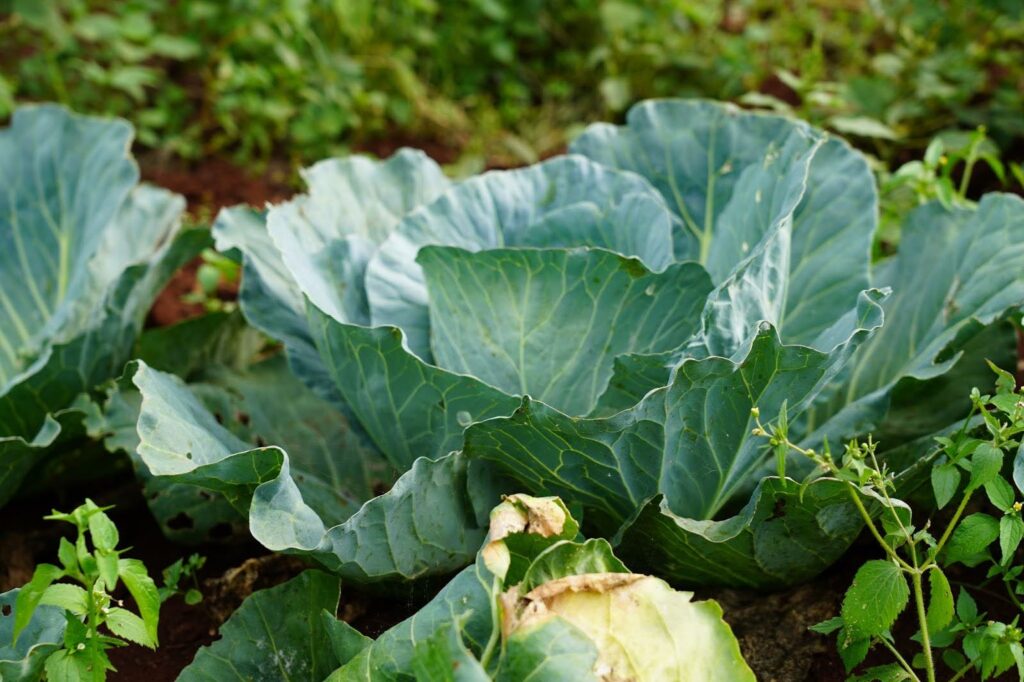
Corina Angheloiu
Agritech Empowerment Network
Mr. Stanley Kihara, lead of the Community-Based Organisation Agritech Empowerment Network, walked us through their process of using tree coverage to sink more carbon. They grow different tree varieties alongside crops, increasing the overall capacity for sequestration, the process of retrieving greenhouse gases from the atmosphere and reintroducing them into the soil. Growing crops with companion trees increases surface area for the photosynthesis process thus leading to more carbon sequestration. Vegetation storing excess emissions over the long term helps reduce the buildup of carbon dioxide in the atmosphere, thereby mitigating global warming.
Some of the trees are used as animal feed, which saves on associated costs. When preparing the nursery for the trees, they make compost fertilisers from the plant wastes, which emit little methane. They also apply it to other food crops. Stanley explained that to intensify the snowball effect of their tree project, they share their tree species with other farmers for a fee to sustain the project, as well as conduct training sessions that focus on regenerative practices. During the visit, Stanley explained how they are harvesting rabbit urine to use as fertiliser and biopesticide for vegetable farming. Due to limitations on space, they employ vertical farming to maximise yields that boost household food and nutrition security.
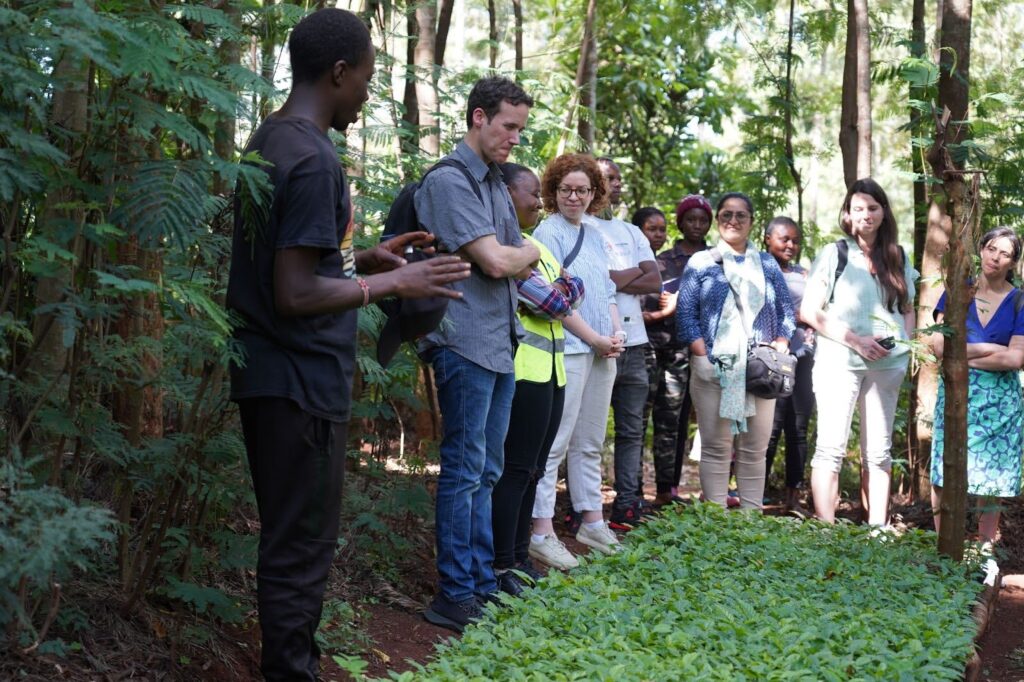
Benedict Isiaho, FSPN Africa
Biogas and bio-slurry
Clean energy is a positive contributor to a sustainable environment and promotes productivity. Maryanne Wangui elaborated on how a biodigester has played a significant role in shielding her household from liquefied petroleum gas (LPG) costs and the use of inorganic fertiliser. They use cow dung from their cattle to produce biogas and slurry.
The animal wastes are mixed with water and fed into an airtight digester. “When bacteria break down organic materials, such as animal waste products, in an oxygen-free environment like the biodigester, biogas is produced as a by-product,” she explained.
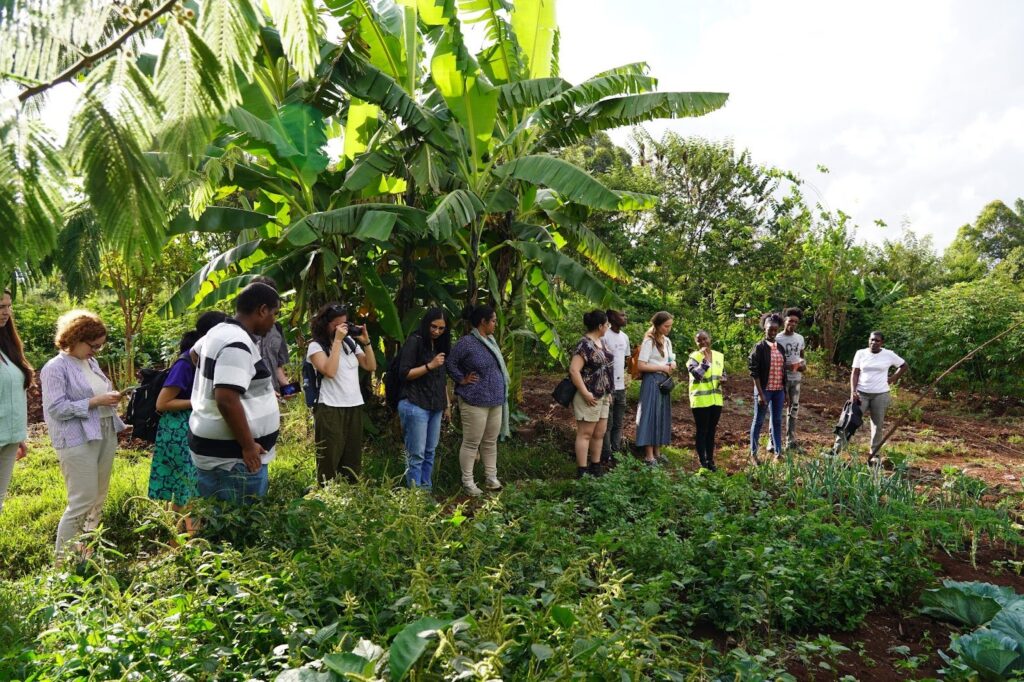
FSPN Africa
The gas leaves the digester via an outlet channel directly to the stove in the kitchen. It uses the methane gas to burn as clean energy. The other waste is released via the exit as bio-slurry that is free from carbon and used as organic fertiliser.
Maryanne has been using the manure to implement regenerative farming. It has worked wonders in terms of high yields of food crops and quality. She reported that her produce has attracted customers who sell to final consumers. The customers acknowledged that sourcing produce from her enables them to compete successfully in the markets where they collect good returns.
Crop rotation, coupled with constant water supply and manure, has improved soil health, enabling year-round farming and increasing soil cover and surface area for carbon sequestration. With experience from previous carbon farming training, her farming goal has been to utilise this technology for carbon offsetting.
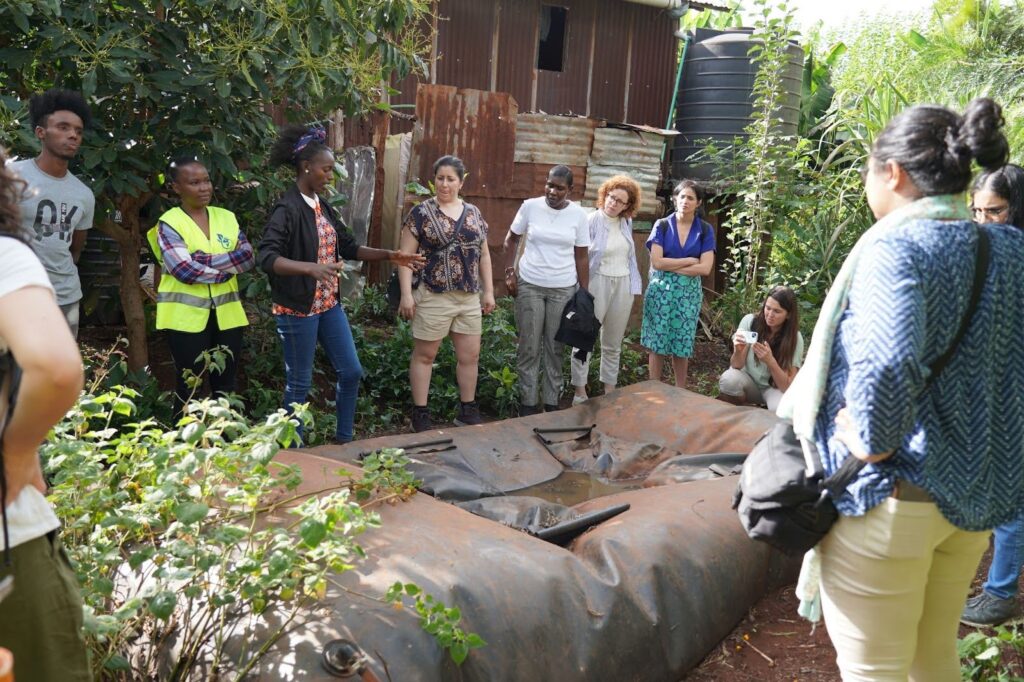
FSPN Africa
Minimum Tillage to improve soil health
Mary Wanjiru is an enthusiast when it comes to caring for the environment. She has been at the frontline of implementing good agricultural practices. For years, she has been growing coffee, a cash crop that thrives in the region. Interestingly, through a series of training sessions on regenerative agriculture and its importance to soil health, she has adopted minimum tillage where she digs small holes during planting time.
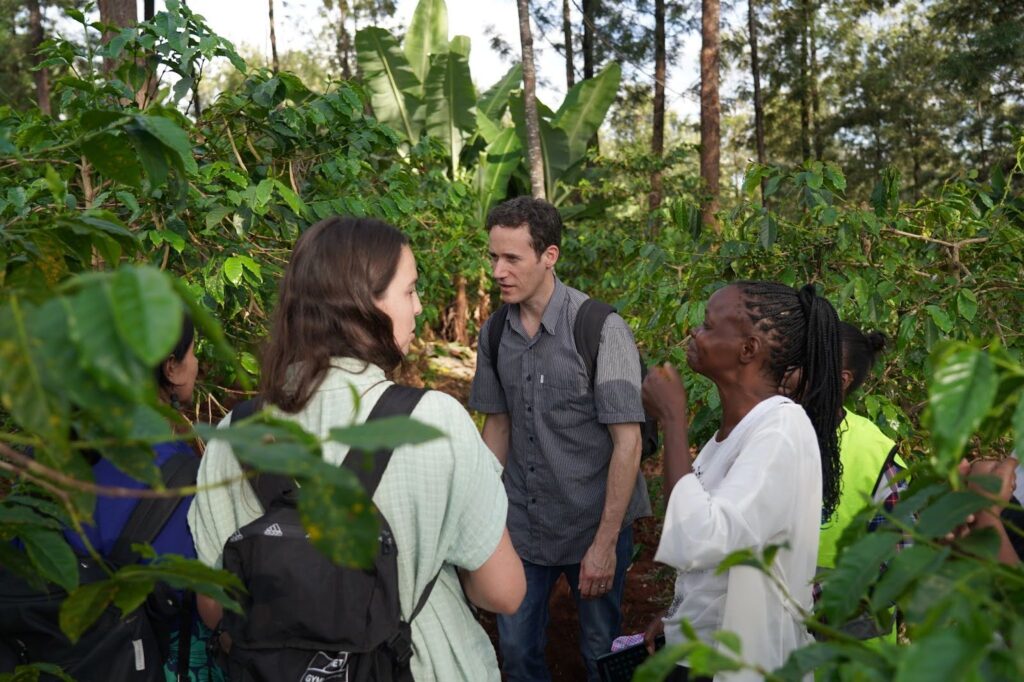
FSPN Africa
The terrain of her land is sloped, making minimum tillage the best option. She intercrops maize with coffee, which are good companion crops. She has also planted trees on her farm to increase soil grip and enhance carbon sequestration. She is one of the beneficiaries of the Carbon Project, where she looks forward to earning carbon credits for her good agricultural practices.
